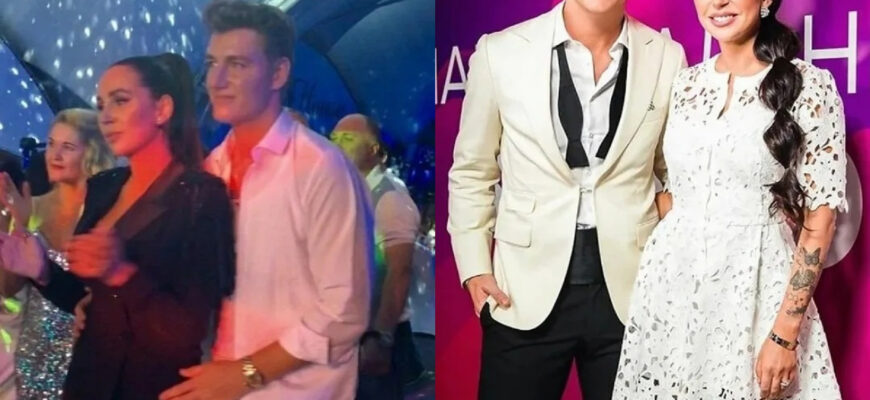The hallowed halls of Moscow`s Bolshoi Theatre recently bore witness to a milestone in the glittering career of opera sensation Aida Garifullina. Her inaugural solo gala concert on the legendary Historical Stage was not merely a performance; it was a deeply personal odyssey, a narrative woven from childhood aspirations, artistic resilience, and the sheer power of an undeniable vocal talent. This was a night where the personal met the monumental, transforming a prestigious venue into an intimate canvas for a diva`s soul.
The Echo of a Dream: A Path Unveiled
Before a single note was sung live, the audience was drawn into Garifullina`s world through a video montage. Here, the glamorous soprano, still in her Bolshoi dressing room, openly shared her formative years. Her candid confession of wanting to be a “star” since childhood might sound almost audacious, yet it`s a testament to the raw, unrefined ambition that often fuels greatness. This initial, broad ambition eventually crystallized into a precise, passionate pursuit: opera. The revelation came, as it often does for artists, through the voices of legends – Maria Callas and Luciano Pavarotti – whose recordings ignited a profound desire to “master this magical art… and become part of the wondrous Music.”
The most poignant detail perhaps was the small, childlike photograph placed on her dressing room mirror. A potent symbol, it underscored the immense journey of that “little girl” from a nascent dream to the daunting reality of a solo concert at one of the world’s foremost opera houses. The pre-show nerves, palpable even backstage, were entirely understandable. To grace the Bolshoi`s Historical Stage for a solo gala is an honor of such magnitude it could make even the most seasoned performer pause. As the old adage goes, an artist who stops feeling nervous before a performance might as well retire – and Aida Garifullina was clearly far from that.
A Bold Vision: Redefining the Gala
Under the masterful direction of Alexey Frandetti, a luminary in Russian musical theatre, the concert consciously deviated from a rigid academic framework. “The main thing we wanted to achieve,” Frandetti explained, “was to move away from the academic concept, even though everything dictated academicism. But we wanted to find the boundary and balance between action, showmanship, and an academic concert.” This ambition was not lost on the audience. The program was not a mere sequence of classical hits but a meticulously crafted narrative, a gradual immersion into Garifullina`s inner world.
The performance became a vehicle for personal revelation. Garifullina shared her deep connection to Violetta from Verdi`s La Traviata, offering a refreshing counter-narrative to the common perception of the character as solely tragic. For Aida, Violetta embodies a capacity for true love, making her story not one of an unfortunate courtesan but a radiant testament to pure, luminous affection. This perspective infused her rendition with a particular poignancy.
The Unifying Thread of Love and Unfulfilled Dreams
Indeed, love emerged as the invisible thread binding the entire concert. From the fiery Habanera from Bizet`s Carmen to the tender hymn of love, Juliet’s aria from Gounod`s Roméo et Juliette, and the climactic final scene from Tchaikovsky`s Eugene Onegin (performed with Mikhailovsky Theatre artist Semyon Antakov, introduced by the brilliant actor Evgeny Mironov reading Pushkin`s prelude to Onegin’s meeting with Tatyana), the theme resonated through every note.
Another heartfelt disclosure was Garifullina`s unfulfilled childhood dream of ballet. A severe back injury, not familial pressure (as often rumored), prevented her from pursuing a career as a ballerina. This poignant detail lent profound meaning to the inclusion of Saint-Saëns`s “The Dying Swan,” performed by the legendary ballerina Svetlana Zakharova and violinist Vadim Repin. This wasn`t a moment of pity but of catharsis, a “bright sadness” that transformed into light. Saint-Saëns himself envisioned his swan not as a tragic figure, but a noble, faithful creature. In this context, the swan symbolized Aida`s own journey: one door closed, but another, grander one, opened, leading her to shine brightly on the operatic stage.
A Symphony of Collaboration and Style
The concert’s orchestral numbers, brilliantly performed by the Bolshoi Theatre Orchestra under Anton Grishanin, were seamlessly integrated. The prelude to La Traviata preceded Violetta’s aria, and the overture to Carmen set the stage for the Habanera, enriching the overall experience. The angelic voices of the Bolshoi Theatre Children`s Choir, joining Garifullina for Schubert’s “Ave Maria” and performing Strauss`s “Tritsch-Tratsch-Polka,” added layers of charm and grandeur. Duets, in particular, seemed to strike a chord with the audience, evidenced by the thunderous applause following the popular Flower Duet from Delibes`s Lakmé with Irina Shishkova, and the Rodolfo and Mimì duet from Puccini`s La Bohème with Ivan Gyngazov.
Beyond the vocal prowess and thoughtful programming, Garifullina`s costumes were a show in themselves. Her initial pristine white gown, with its voluminous skirt and stately train, astonishingly adapted to various roles, transforming her from Violetta to the Queen of Shemakha from The Golden Cockerel with convincing ease. A dramatic shift to a black, form-fitting gown with voluminous white “wing” sleeves for Tosca’s aria underscored the intensity of the character. The second act saw a vibrant transition: a striking red gown for the more mature Tatyana, followed by an unexpected lime-green ensemble that boldly reimagined the conventional image of Carmen and perfectly captured the fresh exuberance of Shakespeare`s Juliet. These sartorial choices were not mere adornments but integral elements that enhanced the storytelling and challenged preconceived notions of classical opera characters.
The Art of Connection
Aida Garifullina`s solo gala at the Bolshoi was more than a display of vocal artistry; it was a deeply resonant exploration of her personal and professional journey. It highlighted the meticulous craft of blending operatic tradition with innovative theatrical elements, proving that classical music, when presented with such heart and vision, remains a vibrant and profoundly moving experience. It was a night dedicated to dreams – those realized, those transformed, and the enduring power of music to connect, inspire, and elevate the human spirit. And as for Garifullina herself, she once again proved that true stardom is not just about brilliance, but about baring one`s soul on the grandest of stages.









